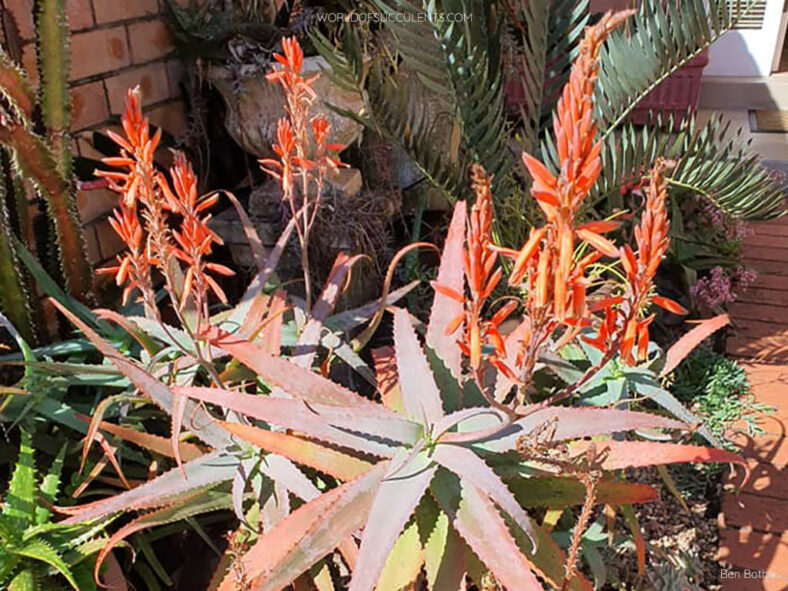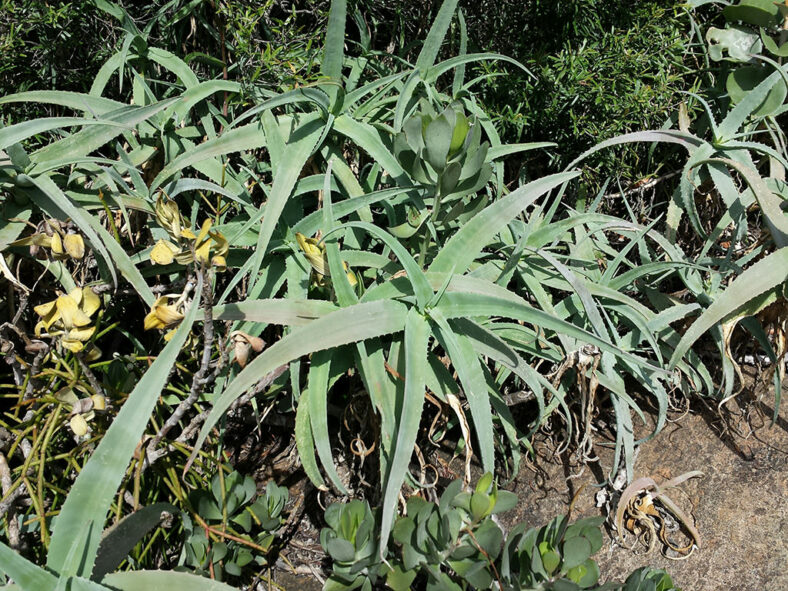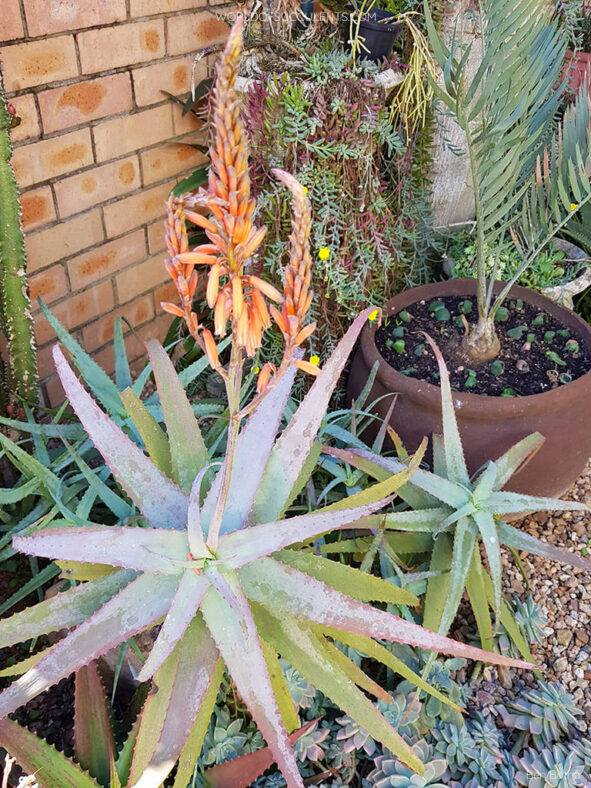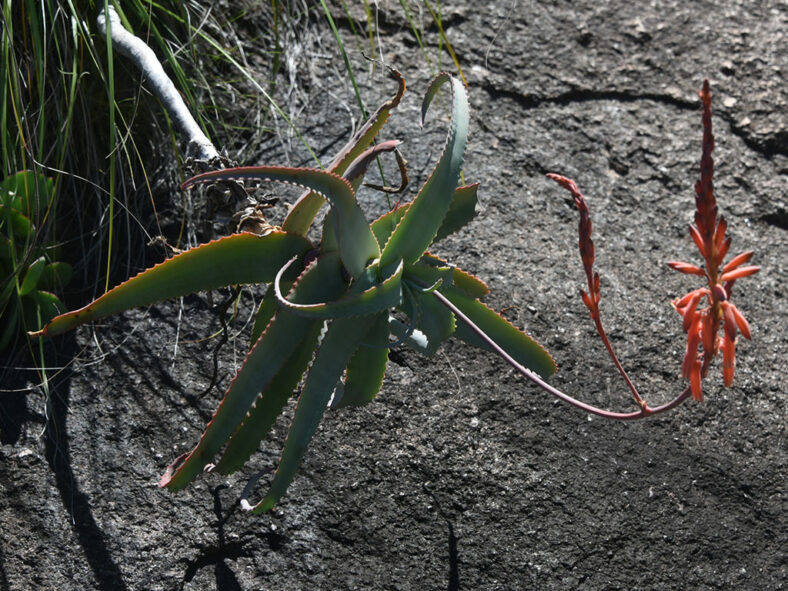Aloe acutissima is a fast-growing, shrubby species that can fill an area within a few years. It can also thrive in pots.
Scientific Name
Aloe acutissima H.Perrier
Common Name(s)
Blue Aloe, Blue Spider Aloe
Synonym(s)
Aloe acutissima subsp. acutissima
Scientific Classification
Family: Asphodelaceae
Subfamily: Asphodeloideae
Genus: Aloe
Etymology
The specific epithet "acutissima" (pronounced ak-yoo-TISS-ee-muh) means "highly sharpened" and refers to the shape of the leaves of this species.
Origin
Aloe acutissima is native to Madagascar. It occurs in the former provinces of Tuliara and Fianarantsoa at elevations ranging from 790 to 3,940 feet (240 to 1,200 m) above sea level.
Description
Aloe acutissima is a succulent shrub that branches out heavily and has stems topped with rosettes of narrow, recurved, blue-green leaves with hints of pink, red, and purple. The stems can be upright, spreading, or prostrate, growing up to 3.3 feet (1 m) long and 1.2 inches (3 cm) in diameter. The leaves are lance-shaped and have sharp, reddish-brown teeth along the margins. They can measure up to 12 inches (30 cm) long and 1.6 inches (4 cm) wide.
During the winter, Aloe acutissima sends up inflorescences with 2 to 3 spike-like branches carrying burgundy buds pressed to the stem. The inflorescences arise up to 20 inches (50 cm) above the foliage, and the racemes can reach a length of 6 inches (15 cm) long and a diameter of 2.4 inches (6 cm). The ring of open flowers begins at the base of the raceme. The tubular flowers are dull red-orange with whitish tips, measuring up to 1.2 inches (3 cm) long and 0.2 inches (0.5 cm) in diameter.

How to Grow and Care for Aloe acutissima
Light: When growing Aloe acutissima indoors, place it in a window with plenty of bright indirect light. Rotate the pot once or twice a week to ensure all sides of the plant receive equal lighting. Outdoors, the plant prefers light shade, especially during the hottest parts of the day.
Soil: Great drainage is essential for growing this plant because too much moisture for an extended period can cause root rot. Use commercial soil for succulents, or make your own well-draining mix.
Temperature: When temperatures shift below 50 °F (10 °C), it is time to bring this plant inside. It tolerates heat fairly well but will not survive a hard frost. Aloe acutissima grows best in USDA Plant Hardiness Zones 9b to 11b, with average minimum winter temperatures ranging from 25 to 50 °F (-3.9 to 10 °C).
Watering: This plant needs regular watering but can tolerate drought conditions for short periods. Water deeply, but only when the soil is completely dry to the touch, and do not let water stand in the rosettes. Cut back on watering during the winter months.
Fertilizing: Although it generally does not require fertilizer, Aloe acutissima will benefit from extra nutrients. Use a water-soluble fertilizer diluted to half the recommended strength.
Repotting: Repot only as needed during spring. Pick a container that is one size larger and has drainage holes.
Propagation: To propagate Aloe acutissima, take stem cuttings during the growing season. Starting from seeds is also easy. For best results, sow the seeds during the warm months.
Learn more at How to Grow and Care for Aloe.
Toxicity of Aloe acutissima
Aloe acutissima is non-toxic to people but is mild to moderately toxic to pets.
Links
- Back to genus Aloe
- Succupedia: Browse succulents by Scientific Name, Common Name, Genus, Family, USDA Hardiness Zone, Origin, or cacti by Genus
Photo Gallery
Click on a photo to see a larger version.


